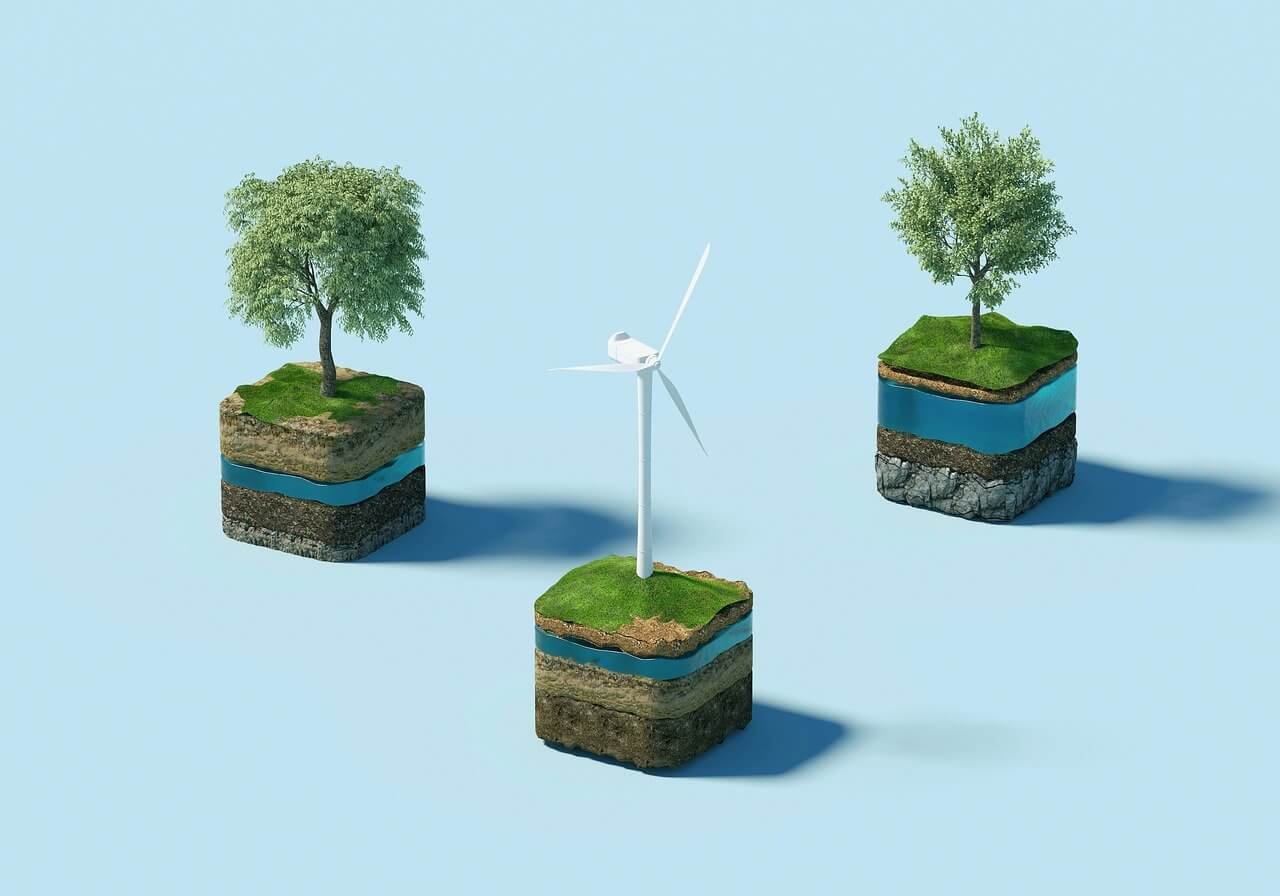Creating a low-waste garden is not only environmentally friendly, but it can also save you time, money, and resources in the long run. By implementing sustainable practices and reducing waste in your garden, you can minimize your environmental impact and contribute to a healthier planet. In this article, you will discover practical tips and techniques on how to create a low-waste garden, from composting and water conservation to choosing eco-friendly materials and natural pest control methods. Embrace the beauty of nature while reducing waste – your garden and the Earth will thank you for it.
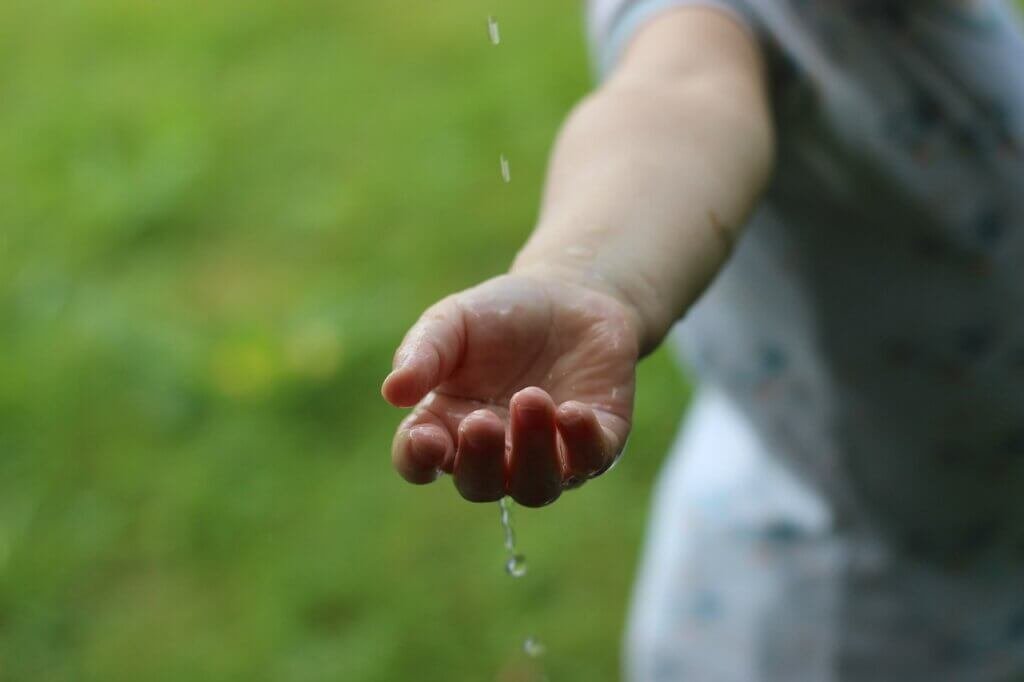
Choosing a Location
Consider sunlight and shade
When choosing a location for your garden, it is important to consider the amount of sunlight and shade that the area receives. Most plants require at least six hours of direct sunlight per day, so selecting a spot that gets adequate sunlight is crucial for their growth and overall health. Take note of any trees or structures that may cast shadows on the area and ensure that they will not obstruct the sunlight. Keep in mind that different plants have varying sunlight requirements, so it may be beneficial to choose a location that offers both sun and shade throughout the day.
Assess soil quality
The quality of the soil in your garden greatly affects the success of your plants. Before planting, it is essential to assess the soil quality to determine its fertility, drainage, and pH level. Conduct a soil test to identify any deficiencies or imbalances in nutrients, as this will help you ameliorate the soil accordingly. It is also important to determine the soil’s texture, as this will inform you on its water-holding capacity and ability to drain excess water. By understanding the composition of your soil, you can make informed decisions about which plants will thrive in your garden.
Evaluate drainage
Proper drainage is crucial for the health of your plants. If the soil in your chosen location does not drain well, it can lead to waterlogged roots and root rot. When evaluating the drainage of the area, take note of any standing water or visible signs of poor drainage after rainfall. If you find that the soil retains water for an extended period, you may need to consider implementing drainage solutions such as raised beds or adding organic matter to improve the soil structure. Ensuring good drainage will prevent water-related diseases and promote healthy plant growth.
Designing a Sustainable Layout
Plan for efficient water usage
Water conservation is a key factor in creating a low-waste garden. To maximize the efficiency of water usage, incorporate water-saving strategies into your garden design. Consider grouping plants with similar watering needs together, so you can water them more efficiently. Install drip irrigation systems that provide water directly to plant roots, minimizing evaporation and water waste. Additionally, mulching your garden beds and containers will help retain moisture in the soil, reducing the frequency of watering.
Incorporate composting areas
Composting is an excellent way to reduce waste and provide nutrient-rich soil for your garden. When designing your garden, allocate space for a composting area where you can recycle organic matter such as kitchen scraps, yard trimmings, and fallen leaves. Composting not only reduces waste that would otherwise end up in landfills but also creates a sustainable source of natural fertilizer for your plants. By composting, you can close the loop and ensure the nutrients in your garden remain in a continuous cycle.
Utilize vertical gardening
Maximize your garden space by incorporating vertical gardening techniques. Growing plants vertically not only saves space but also improves air circulation and allows plants to receive adequate sunlight. Consider using trellises, arbors, or vertical planters to support vine plants or those that have a climbing habit. Vertical gardening is not only space-efficient but also adds aesthetic appeal to your garden, creating a lush and vibrant environment.

Selecting Low-Waste Plants
Opt for native species
Choosing native plants for your garden is an excellent way to minimize waste and support the local ecosystem. Native plants are adapted to the local climate and require less water, fertilizer, and pesticides compared to exotic species. They also provide food and habitat for local wildlife, promoting biodiversity. Research the native plants in your region and select those that are well-suited to your garden’s conditions. By planting native species, you can create a thriving and balanced ecosystem in your own backyard.
Choose perennials over annuals
Incorporating a mix of perennial and annual plants in your garden can significantly reduce waste. While annual plants complete their life cycle in one growing season, perennial plants live for multiple years, reducing the need for replanting and minimizing the amount of waste generated. Perennials also tend to have deeper root systems, which improves soil structure and water absorption. Additionally, many perennials offer beautiful blooms and foliage year after year, providing a sustainable source of beauty in your garden.
Consider plants with multiple uses
When selecting plants for your low-waste garden, consider those that offer multiple uses. Medicinal herbs, edible fruits and vegetables, and plants that attract pollinators are excellent options. By choosing plants with multiple purposes, you can maximize the benefits your garden provides while minimizing waste. For example, planting herbs like lavender and chamomile not only adds beauty and fragrance to your garden but also offers potential therapeutic uses. Incorporating fruit trees or vegetable beds allows you to harvest fresh produce while reducing transportation emissions associated with store-bought alternatives.
Practicing Water Conservation
Use drip irrigation systems
Drip irrigation systems are a highly efficient method of watering your garden while minimizing water waste. Rather than spraying water indiscriminately, these systems deliver water directly to the plant’s root zone, where it is most needed. By reducing evaporation and runoff, drip irrigation systems conserve water and ensure that each plant receives the necessary hydration. Moreover, these systems can be automated, allowing for precise control of water delivery and reducing the risk of overwatering.
Harvest rainwater
Rainwater harvesting is a sustainable practice that helps conserve water and reduces the strain on local water supplies. Collecting rainwater can be as simple as placing containers or barrels under downspouts or using more elaborate rainwater harvesting systems. The collected rainwater can then be used to irrigate your garden, reducing the demand for treated tap water. Harvesting rainwater not only conserves a precious resource but also helps prevent soil erosion and pollution caused by stormwater runoff.
Avoid overwatering
Overwatering is a common issue in many gardens, leading to plant stress, root rot, and wasteful water usage. It is important to understand the specific watering needs of each plant in your garden and adjust accordingly. Rather than adhering to a set watering schedule, check the moisture level of the soil regularly and water only when necessary. Implementing proper watering techniques, such as deep watering to encourage deep root growth, can help plants become more resilient and reduce water waste.
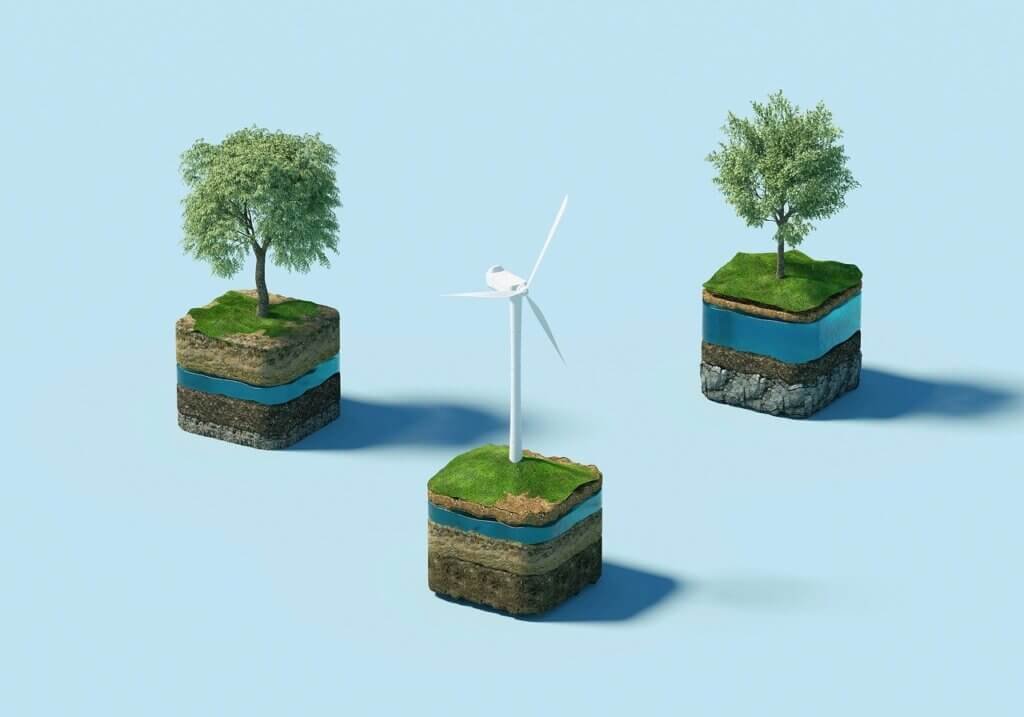
Implementing Natural Pest Control
Attract beneficial insects
Encouraging beneficial insects into your garden is an effective way to manage pests naturally. Many insects, such as ladybugs, lacewings, and hoverflies, feed on harmful pests like aphids and caterpillars. By planting flowers that attract these beneficial insects, such as daisies, marigolds, and yarrow, you can create a diverse ecosystem that helps maintain a balance between pests and their predators. Avoiding the use of chemical pesticides preserves the habitat for beneficial insects and ensures a healthier garden environment.
Practice companion planting
Companion planting is the intentional placement of certain plants next to each other to enhance their growth and deter pests. Some plants release natural chemicals that repel specific pests or attract beneficial insects. For example, planting marigolds alongside tomatoes can help deter nematodes, while basil planted near tomatoes repels hornworms. Research companion planting combinations that work well for the crops you intend to grow and incorporate them into your garden design. By utilizing companion planting techniques, you can naturally reduce pest problems and increase biodiversity in your garden.
Use organic insecticides sparingly
In situations where pests become overwhelming, the use of organic insecticides may be necessary. However, it is important to use these products sparingly and as a last resort. Organic insecticides, derived from natural sources such as neem oil or insecticidal soaps, are less harmful to beneficial insects and the environment compared to synthetic alternatives. When using organic insecticides, follow the instructions carefully and target only the affected areas. By resorting to organic options judiciously, you can mitigate pest issues while still maintaining a low-waste garden.
Reducing Waste from Garden Maintenance
Use manual tools instead of powered ones
To reduce waste and minimize environmental impact, opt for manual gardening tools instead of their powered counterparts. Using hand tools such as pruners, shears, and hand trowels not only reduces energy consumption but also provides more precision and control. Manual tools are also easier to maintain and repair, allowing for a longer lifespan and less waste. Embracing manual garden practices not only supports sustainability but also encourages a closer connection with your garden and the natural world.
Reuse and repurpose gardening materials
Instead of discarding gardening materials after use, find creative ways to reuse and repurpose them. For example, old wooden pallets can be transformed into vertical planters, and empty containers can be turned into seed starting pots. Broken terracotta pots can be repurposed as drainage materials in new pots or used as decorative elements in garden borders. By finding new purposes for old materials, you can reduce waste and add a unique touch to your garden.
Compost garden waste
Composting garden waste is a fundamental practice in low-waste gardening. Instead of throwing away plant trimmings, fallen leaves, and other organic matter, compost them to create nutrient-rich soil amendments. Establish a compost pile or bin in your garden and add items such as grass clippings, pruned branches, and plant debris. Layer them with brown materials like dried leaves or shredded paper to maintain a balanced compost pile. Over time, you will generate rich compost that can be used to nourish your plants, closing the loop and minimizing waste.
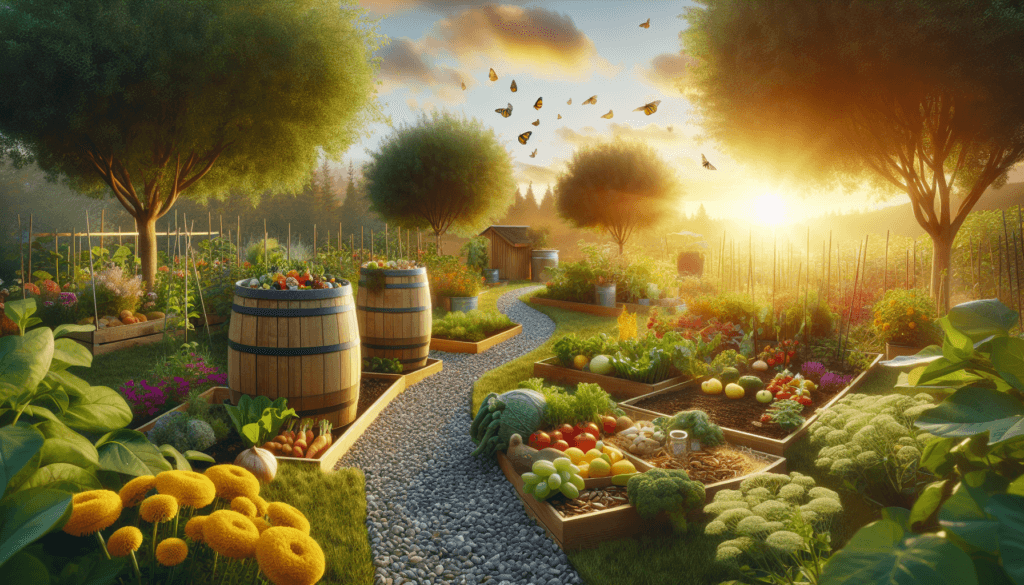
Creating a Wildlife-Friendly Environment
Provide water sources for wildlife
To attract and support wildlife in your garden, providing water sources is essential. Create bird baths, small ponds, or shallow containers filled with clean water to offer hydration for birds, insects, and other wildlife. Ensure that the water source is easily accessible and refill it regularly to maintain a fresh supply. Adding water features not only attracts diverse species but also adds a tranquil element to your garden, creating a peaceful and harmonious environment with nature.
Plant diverse vegetation to support pollinators
Pollinators, such as bees and butterflies, play a vital role in plant reproduction and contribute to the health of ecosystems. Creating a diverse array of flowering plants throughout your garden will attract and provide sustenance for these important pollinators. Choose nectar-rich flowers in various shapes and sizes, ensuring there is a continuous supply of food throughout the growing season. By planting a wide variety of flowering species, you can support pollinators and enhance the beauty of your garden.
Create habitats for beneficial animals
Encouraging beneficial animals, such as birds, bats, and toads, to take up residence in your garden can help control pests naturally and maintain a balanced ecosystem. Install birdhouses, bat boxes, and toad shelters in appropriate areas of your garden. Provide suitable habitat elements such as brush piles, rock piles, and deadwood that offer hiding places and nesting spots for wildlife. By creating a welcoming environment for beneficial animals, you can promote biodiversity and reduce the need for chemical pesticides.
Applying Sustainable Fertilizer and Soil Amendment Methods
Make your own compost
Compost is a natural and sustainable fertilizer that enriches the soil with essential nutrients. Rather than relying on synthetic fertilizers that can harm the environment, make your own compost using organic materials from your garden and kitchen. Combine green materials such as fruit and vegetable scraps, grass clippings, and coffee grounds with brown materials like fallen leaves, shredded newspaper, and wood chips. Regularly turn the compost pile to promote decomposition, and within a few months, you will have nutrient-rich compost to feed your plants.
Use organic fertilizers
If additional fertilization is necessary, opt for organic fertilizers instead of synthetic ones. Organic fertilizers, derived from natural sources such as compost, manure, or bone meal, nourish the soil and improve its fertility without the use of harsh chemicals. They are slow-release, providing a steady source of nutrients over time, and also contribute to the overall health and structure of the soil. By choosing organic fertilizers, you can support the long-term health of your garden while minimizing environmental impacts.
Apply cover crops for soil enrichment
Cover crops, also known as green manure, are crops that are grown specifically to improve soil health. These crops can be sown during periods of the year when your main crops are not in the ground, effectively utilizing the space and reducing the need for synthetic fertilizers. Cover crops, such as clover, rye, or vetch, help increase organic matter in the soil, suppress weeds, and enhance nutrient availability. When the cover crop matures, it can be cut down and incorporated into the soil, providing natural soil amendments.
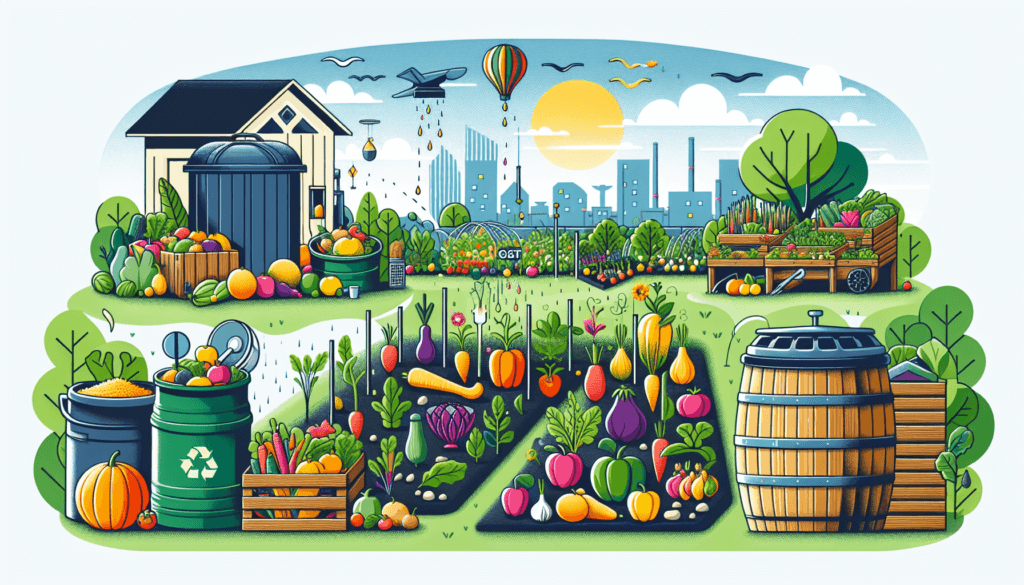
Mulching for Weed Control and Soil Conservation
Choose organic mulch materials
Mulching is an effective technique for suppressing weeds and conserving soil moisture, and choosing organic mulch materials enhances its benefits. Organic mulches, such as wood chips, straw, compost, or dried leaves, gradually break down over time, enriching the soil with organic matter and nutrients. They also help regulate soil temperature, preventing extreme fluctuations that can stress plants. Avoid using synthetic mulches, as they do not contribute to soil health and can release harmful chemicals into the environment.
Apply a thick layer of mulch
To effectively control weeds and conserve soil moisture, apply a thick layer of mulch throughout your garden. A layer of mulch should be at least two to three inches deep. This thickness helps to smother weed growth by blocking sunlight and creating a barrier for weed seeds. The mulch layer also acts as insulation, reducing evaporation and retaining moisture in the soil. By maintaining a consistent layer of mulch, you can minimize weed competition, reduce water consumption, and promote healthier plant growth.
Mulch around plants to suppress weeds
In addition to applying mulch in garden beds, mulching around individual plants is an effective way to suppress weeds while providing additional benefits. Gently pull existing weeds around your plants and create a small circle of bare soil around each plant’s base. Then, apply a layer of mulch around the plant, ensuring that it does not touch the stem or trunk directly. This method inhibits weed growth, conserves moisture, and regulates the temperature around the plant, creating optimal growing conditions and reducing the need for frequent weeding.
Continual Monitoring and Adaptation
Regularly observe plant health
Continual monitoring of your garden is essential to ensure the health and success of your plants. Regularly inspect your plants for signs of pests, disease, or nutrient deficiencies. Look for wilting, discoloration, or abnormal growth patterns, and take appropriate action promptly. Identifying problems early on allows for more effective intervention and minimizes the need for drastic measures later. By staying attentive to your garden’s needs and addressing any issues promptly, you can maintain a thriving and low-waste garden.
Adjust watering and fertilizing strategies
As your garden evolves and plants grow, it is necessary to adjust your watering and fertilizing strategies accordingly. Take into account seasonal variations, changes in weather patterns, and the specific needs of each plant. Some plants may require more water during hot and dry periods, while others may benefit from reduced watering during cooler months. Similarly, adjust your fertilizing schedule based on the growth stage of the plants and the nutrient requirements indicated by regular soil testing. By tailoring your watering and fertilizing practices to the current needs of your garden, you can optimize resource usage and promote plant health.
Assess and respond promptly to pest infestations
Pest infestations can occur despite best efforts. Regularly inspect your plants for signs of pests, such as chewed leaves, discolored foliage, or the presence of insects. If an infestation is detected, respond promptly to prevent its escalation. Consider implementing organic pest control methods, such as handpicking insects, introducing predators, or using natural insecticides sparingly. By closely monitoring your garden for pests and taking swift action, you can minimize damage and reduce the need for drastic interventions.
In conclusion, creating a low-waste garden requires careful consideration of various factors such as location, plant selection, water conservation, pest control, waste reduction, wildlife support, and sustainable soil practices. By following these guidelines and incorporating eco-friendly strategies, you can design and maintain a garden that fosters biodiversity, conserves resources, and contributes to a healthier environment. Embrace the opportunity to create a sustainable oasis in your own backyard and inspire others to do the same. Happy gardening!

